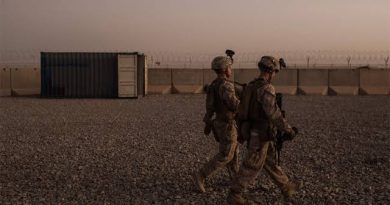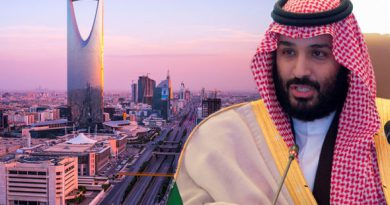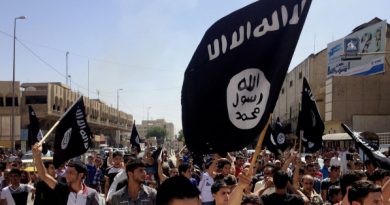Islamism in Suits: Why the America Must Confront the Brotherhood Now
Today’s jihadists wear suits, engage in public discourse, and wield influence through political parties and media platforms.
In the years following 9/11, American counterterrorism strategies focused almost exclusively on dismantling terrorist networks like al-Qaeda and ISIS. While this approach successfully eliminated key leaders and disrupted cells, it largely ignored a deeper and more enduring threat: the ideological infrastructure that breeds and sustains extremism.
Ahmed Charai, a respected voice in global security and the publisher of the Jerusalem Strategic Tribune, argues that this oversight has left the world vulnerable to a new wave of jihadist violence, anchored in the transnational Islamist movement known as the Muslim Brotherhood.
Charai, who also serves on the boards of the Atlantic Council, the Center for Strategic and International Studies (CSIS), and the United States Institute of Peace, emphasizes that while battlefield victories may eliminate terrorists, ideological indoctrination continues to spawn new recruits.
He writes, “While America has long focused on defeating terrorist networks like al-Qaeda and ISIS, it has largely overlooked the ideological infrastructure that gave birth to them. At the heart of that ecosystem lies the Muslim Brotherhood.”
The Muslim Brotherhood’s Global Reach
Founded in Egypt in 1928, the Muslim Brotherhood was initially a socio-religious reform movement. However, over the decades, it evolved into a political force that inspired some of the world’s most dangerous extremist groups, including al-Qaeda and Hamas.
Charai points out that “the Muslim Brotherhood and its ideological allies no longer operate in the shadows.” Instead, they have become emboldened, leveraging democratic platforms to glorify terrorism, coordinate with adversaries like Iran, and spread extremist ideologies under the guise of civil society activism.
The October 7, 2023 Hamas massacre in Israel—marked by mass killings, sexual violence, and the kidnapping of civilians including Americans—was a shocking reminder of the Brotherhood’s continuing threat. Hamas is the Palestinian branch of the Muslim Brotherhood. In the aftermath of that attack, Brotherhood-affiliated parties across North Africa and the Middle East openly praised the violence.
This was not just political posturing—it was, as Charai notes, “ideological solidarity with terror.”
Ideological Convergence of Islamist Extremists
One of the most alarming trends Charai highlights is the growing cooperation between Sunni and Shia Islamist groups, despite their theological differences.
He writes, “Islamist actors like Hezbollah, the Houthis, and the Muslim Brotherhood have converged strategically. They share logistics, messaging, and battlefield objectives.”
These alliances, often coordinated through Iran’s Islamic Revolutionary Guard Corps (IRGC), are united by a singular aim: the erosion of American influence in the Middle East and the imposition of authoritarian religious rule.
This strategic alignment has consequences beyond the battlefield. According to Charai, “advocacy networks, political parties, mosques, and media platforms” in the West echo the same extremist narratives. These platforms champion “resistance to the West,” “rejection of Israel,” and a worldview that opposes liberal democracy. The challenge is not merely foreign—it’s increasingly domestic.
Exporting Extremism to the West
Charai draws attention to the worrying rise of Islamist influence in Western societies, especially in the United States.
Citing the surge in pro-Hamas demonstrations and antisemitic rhetoric on American campuses, he warns that many of these movements are shaped by narratives “promoted by Brotherhood-linked groups operating in the US.” These organizations often disguise themselves as civil rights advocates, enjoying nonprofit status and constitutional protections while promoting divisive and extremist ideologies.
This duality—exploiting democratic freedoms while opposing democratic values—is at the heart of Charai’s warning. As he starkly puts it, “Islamist movements do not seek to participate in liberal democracies—they seek to exploit them until they can replace them.” In other words, these movements are not interested in pluralism or dialogue; their endgame is dominance.
A Policy Roadmap for the United States
So, what can be done? Charai offers a four-pronged strategy that, if implemented, could significantly curb the spread of Islamist extremism in the United States and abroad.
1. Designate the Muslim Brotherhood as a Foreign Terrorist Organization (FTO):
Charai argues this would enable the U.S. government to freeze assets, impose travel bans, and prosecute individuals providing material support. Although past administrations considered this move, they were deterred by bureaucratic inertia. But as Charai insists, “The facts today make inaction indefensible.”
2. Target Domestic Front Groups:
Many Brotherhood-linked organizations in the U.S. are connected to foreign donors and governments. Charai calls for legal and financial scrutiny of these groups. If American institutions are inadvertently facilitating extremism, “they must be held accountable.”
3. Impose Travel Bans on Islamist Leaders and Families:
Those who glorify terrorism should not benefit from the freedoms of the societies they seek to undermine. Charai advocates barring these individuals from entering or doing business in the U.S., emphasizing that this would send a clear message: “Praising terrorism disqualifies you from enjoying the privileges of the West.”
4. Pressure Allies to Crack Down on Extremist Political Parties:
The U.S. should use diplomatic and economic leverage to encourage partner governments to reform laws that allow extremist parties to dominate political discourse. This means holding allies accountable when Brotherhood-affiliated parties engage in hate speech, glorify terrorism, or suppress dissent.
The Stakes Are High
Charai’s message is urgent and uncompromising: “Islamist extremism does not remain in rhetoric—it translates into action. And when those actions result in the deaths of Americans, silence is not an option.” The threats are not theoretical; they are real, organized, and growing. The failure to respond now will lead to deeper polarization at home and greater instability abroad.
We are no longer dealing with militants hiding in caves. Today’s jihadists wear suits, engage in public discourse, and wield influence through political parties and media platforms. This is what Charai calls the “new phase” of the war on terror—one that must be fought not just on the battlefield, but in courtrooms, campuses, parliaments, and civil society.
Ahmed Charai’s analysis is a wake-up call for policymakers, civil society leaders, and citizens alike. The ideological war against Islamist extremism requires more than surveillance and drone strikes. It demands intellectual clarity, legal action, and political will. As Charai powerfully concludes, “The time for complacency is over. The time to act is now.”
In a world where extremist ideologies are increasingly cloaked in the language of rights and representation, the challenge is not just to oppose terror—but to expose the ideas that justify it. Only then can we build a more secure, resilient, and truly free society.



